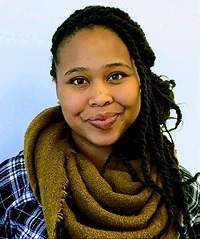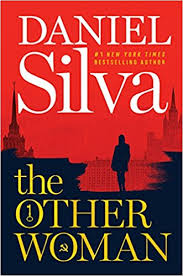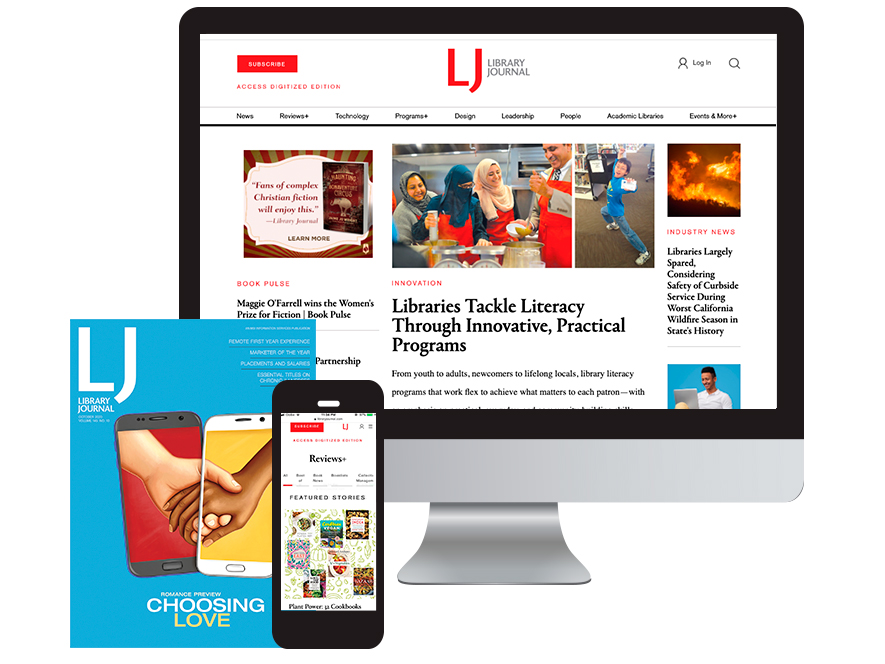Janelle Richards, Toronto Public Library’s First Environmentalist in Residence
Janelle Richards stepped into her role as the first Environmentalist in Residence at Toronto Public Library (TPL), ON, Canada, on June 4. An environmental educator and certified teacher with over seven years’ professional experience, Richards will offer her expertise on conservation and sustainability, as well as programs, workshops, and community consultations, at TPL’s Albion Branch and Scarborough Civic Centre Branch.
 Janelle Richards stepped into her role as the first Environmentalist in Residence at Toronto Public Library (TPL), ON, Canada, on June 4. An environmental educator and certified teacher with over seven years’ professional experience, Richards will offer her expertise on conservation and sustainability, as well as programs, workshops, and community consultations, at TPL’s Albion Branch and Scarborough Civic Centre Branch.
Janelle Richards stepped into her role as the first Environmentalist in Residence at Toronto Public Library (TPL), ON, Canada, on June 4. An environmental educator and certified teacher with over seven years’ professional experience, Richards will offer her expertise on conservation and sustainability, as well as programs, workshops, and community consultations, at TPL’s Albion Branch and Scarborough Civic Centre Branch.
LJ caught up with her halfway through her residency to find out more about her work inside and outside the library.
LJ: How did you get involved in environmental education?
I’ve always been interested in the environment and in nature. I grew up in the suburbs—Pickering, the south side of Toronto. But we were right beside a really big natural area called Rouge Park. It just got deemed a national park, which is pretty cool. My dad would always take us out on hikes, and I’d go find snakes, or go tobogganing. I mean, it wasn’t like back country camping or anything like that, but just walking through the forest was the highlight of my weekends and my summer. It was a good time.
I went to the University of Guelph and I took an undergraduate degree in wildlife biology. My idea was to become a vet, and…my path changed while I was there. I realized that conservation and protection of the environment is important, but my role was more teaching people about what I was learning and how they can help protection and conservation, rather than being in a lab and studying. So I went to teachers' college afterward.
How did that lead you to this role as environmentalist in residence?
I’ve always been in libraries, whether it’s picking up a field guide to lead a group through the forest, or tutoring.
When I graduated teachers' college, I bounced around in nonprofits and conservation authorities within the city, doing education. I eventually landed at the Jane/Finch Centre, which is a community-based nonprofit organization. I was starting to think about my position as an environmental educator, as a black environmental educator, and what that could mean to the communities that look like me or that can identify with me. Because in my prior work, a lot of the people that would come out to a forest or come out on the field trip didn’t look like me.
One day I had a group come through, a group of kindergarten girls. And one of the girls, a little black girl, she looked at me and she [said], "Your hair looks like mine." And I knew that that representation was so important for her, because she didn’t look like anyone else in her class. We were about to go into the forest and get muddy, and the fact that I looked like her gave her permission to express herself in a way that she wanted to while she was out in nature.
Working at the Jane/Finch Centre, and now this job at the library, allows me to think about the community as a whole, how we can meet people where they are in their relationship with nature and their relationship with the environment, and go from there. A lot of newcomer communities or a lot of racialized communities don’t have the connection with nature. Having a program that allows them to explore nature in a starting place that’s comfortable for them, I think, is really important, and that’s why I was interested in this position.
What kind of neighborhood are you working in at TPL?
The Albion branch is sort of like the inner suburbs of Toronto. It’s in an area that is mostly racialized, a lot of newcomer communities, a lot of first and second generation communities.
We’re right on the Humber River. There’s a beautiful ravine, and people aren’t using the space. There’s so many barriers and [history] around connecting these communities to nature. My goal was to come into this thinking about how I could connect these people to nature in a way that makes sense.
I’m at the Albion branch just for the first half of the summer, and the second half of the summer I hop over across the city, [to] more of a suburban area, to Scarborough Civic Centre Library, right in the hub of Scarborough.
What have you been doing at the library since you started in the role?
The first two weeks was just [about] getting my face out there, getting people to recognize me. I went to a few community events to promote the program and let people know I’ll be in the library for the next few weeks.
[The third week of June] was my first week of programs, and also coincidentally the National Pollinator Week throughout Canada and the United States. So I focused on the health of pollinators, and what we can do to help pollinators. I did some workshops about Toronto’s official bee, which is the bicolored sweat bee.
We made some solitary bee homes, a different way that people can connect with bees. People are usually scared of bees, but we learned that the bees that would be in these homes are really nice bees and important to ecosystems. We also did a Get to Know a Pollinator day. We talked about all sorts of pollinators, and we made some seed balls with some native seeds from the area. [Participants] got to take home some seed balls so that they could help create habitats for some pollinators around their homes or their apartments or their parks.
Schools visit the library often, so I’ve been piggybacking on those and talking to the students about how they can connect better to their environment. And because last week was Pollinator Week, the classes that came through, I talked to them about our different pollinators and advertised the different programs that I was doing.
What will you do when you move over to Scarborough?
I’ll have time to do more workshops, which will be fun. I’m hoping to include some more indigenous knowledge sharing. We’re going to be taking a look at water, because [the branch is] right beside a ravine, a little creek. We’re going to take a look at the history of our woodlots and ravines in the area and go for a nature walk. There’s a woodlot right beside the library that’s not often used, so I want to go over there.
One thing that I’m really excited about is a workshop on biomimicry. I want to talk about…how engineers and scientists look to nature to think about how to build things for humans. We’ll take a look at some structures and some shapes in nature, and hopefully be able to put them on the 3-D printers in our innovation hub.
Did you develop the programming yourself, or partner with the library staff?
It’s mainly me, but I have worked with staff to talk about what works, the programs they already have at the library, as well as what the community is like and what [it] would be receptive to. We worked with staff on timing as well. But in terms of the programs, that’s my job to come up with cool ideas for the library community.
What will you do when the appointment ends? What’s your next step?
Part of this position is to come up with some sort of training or education piece for the library staff. So at the end of all of this, I’m going to come up with an online resource for the staff to engage their communities—adults and children and families and seniors—more in the outdoor spaces near the libraries. Right now the library already has an “Our Fragile Planet” program, which runs throughout the year and has different topics around the environment that people will come to at different branches. My hope is that the library staff will be able to use the outdoor spaces a lot more in regular programming, or encourage people to bring a book outside to read, or read a book for story time outside in the reading gardens—other ways for people to start connecting with nature in this sort of urban setting.
I want to keep working with people in cities in their natural spaces. So whether that is starting my own organization around teaching people to be in nature from an equity lens—I think that would probably be my top goal, to start my own education nonprofit around getting other communities, communities that we don’t often think of in nature, out in nature in the city of Toronto.
You mentioned standing out to that little girl early in your career. What challenges have you encountered as a woman of color in this field?
I wouldn’t say it’s been hard, necessarily, because there’s lots of women in environmental education. But coming to it as a woman of color, that intersectionality definitely adds a layer to the conversation I’ve had within the circles that I’m a part of. I’m often the only black female teaching or in these circles as an environmental educator.
In terms of how people teach about environmental topics, they don’t necessary come at it from an equity lens. So it’s usually my responsibility, or they look to me like, is this okay to say? Or, will this connect with people? Because there’s not a lot of representation of different communities within environmental education. So that’s sort of my experience…. Which I welcome because I think it’s important, especially in a city like Toronto where it’s so diverse and multicultural. Thinking about how the sector can address these issues more head on is, I think, important.
It must be great for these urban kids to have this opportunity.
For sure. I love the forest, I love all that stuff. But part of my work right now is starting kids who haven’t even been in the ravines there—studying them, thinking about nature in their neighborhood parks. Like, they go to the playgrounds all the time, but do they think of it as a natural space? And how can we start thinking of playgrounds and parks as a natural space in a way to start fostering that appreciation for nature, so they can start making decisions about their natural spaces a lot better, or interacting and getting all the benefits from nature and parks, the same as in any other community.
Are other libraries going to replicate this environmental residency?
At this point it’s sort of a pilot. [TPL] got funding from TD Friends of the Environment for this year. So depending on how this year goes, I think they’re willing to continue the program. So far I don’t know of any other libraries that are doing a specific program like this.
But in terms of this environmentalist in residence [position], that’s dedicated to environmental programming, I’m not entirely sure. It’s been getting a lot of good reception. I think people are appreciative that the libraries are offering this program that not only can bridge the knowledge that [people] can gain at the library, but also that helps them get outside and connect to the world that’s around them.
RELATED
ALREADY A SUBSCRIBER? LOG IN
We are currently offering this content for free. Sign up now to activate your personal profile, where you can save articles for future viewing









Add Comment :-
Comment Policy:
Comment should not be empty !!!